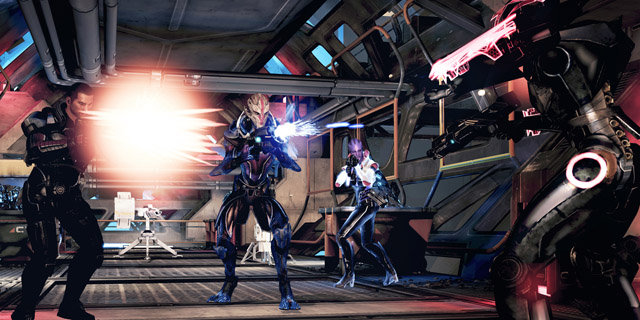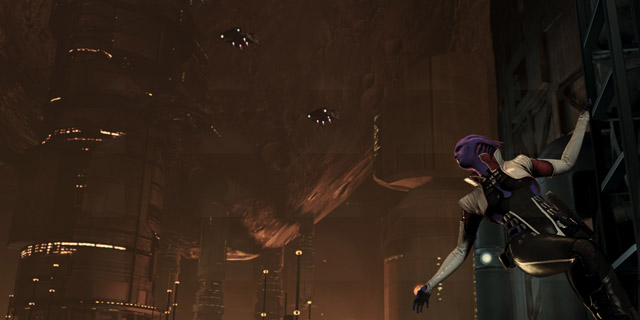
Mass Effect DLC is a little strange. Story-heavy games are sometimes hard to go back to, and that is absolutely epitomized by Mass Effect 3. The story ended. I finished it months ago. In order to play the DLC packs, I’ve had to load up a save from before the final act of the game, and it’s a bit strange. I know what’s going to happen, and I know that since the DLC packs can’t and won’t radically alter the ending, that unless a pack really dives into the lore (like Leviathan did), my efforts won’t have a real and lasting effect on the universe.
My favorite bits of DLC in the Mass Effect universe have been Project Overlord and Leviathan. That got me thinking. What sets these packs apart? The combat is good across the series, thanks to fun powers, wide selection of weapons and interesting enemies. What did Project Overlord do that Stolen Memory didn’t? It gave me a self-contained story with strong characters and thought- provoking situations, and shined a light on a part of the greater Mass Effect universe. Project Overlord tackled morality and told a great horror story along the way, and Leviathan evoked Lovecraftian terror while greatly expanding what we know about the reapers. Obtaining a new character is nice (particularly Mass Effect 3’s Javik), but what I really want is a gripping story.

Omega doesn’t deliver on that front. The story isn’t bad, but I don’t rightly care about taking back Omega. If this storyline had been folded into my initial play of the game that’d be one thing, but at this point – after seeing the trilogy’s end – I don’t care at all about Aria’s black market asteroid station out in the Terminus. I’m doing all of my complaining up front here. There is good in Omega as well. You get two new playable characters to use throughout the DLC pack. Aria wants only Shepard with her, which makes sense to me since I haul Garrus around with me everywhere I go. Taking that choice away from the player felt cheap at first, but it allowed BioWare to tailor your squad to the enemies that you’ll experience, and it allows them to tell a new story with new characters.
Along with two temporary squadmates, you’ve got side missions, two new enemy types, two weapons that were previously only available to those that played the Kingdoms of Amalur: Reckoning demo and preordered the game, five weapon mods, four war assets, two new biotic powers and a decorative item for Commander Shepard’s cabin. The powers, Flare and Lash, are both fun to use, and making the N7 Valkyrie and the Chakram Launcher available to all players is nice to see.
Omega is heavy on combat, but the new characters and powers are great to use, Cerberus forces are the most fun to fight in Mass Effect 3 and the set pieces are beautiful to look at as well as entertaining to fight in. Neither of your squadmates will join you post-mission, which jives with the story being told but is still disappointing. The value proposition isn’t great either. While longer than Leviathan, I don’t feel like I got an extra $15 worth of fun here. For that much money I’d expect a permanent squadmate and a few more missions. What I got is good, but it’s not enough, and it’s certainly not my favorite bit of Mass Effect DLC.
Pros: Provides closure to Aria’s ME3 story, new (temporary) squadmates are fun, still fun to fight Cerberus forces
Cons: Lacks punch coming out so long after we’ve all beaten ME3, focuses on combat instead of fleshing out the ME universe



















